Goopy Science: How to Make Slime with Glue
Here's a simple way to make colorful slime with your kids while having fun and perhaps learning a little science.
What you need:
- Polyvinyl acetate glue (school glue or craft glue)
- Baking soda
- Food coloring
- Contact lens solution
- *Vinegar (Optional ingredient that can be used for cleanup.)
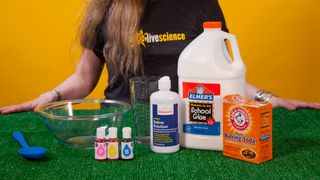
Let's make some slime
Step 1: Add glue
Add about 1 cup (8 ounces) of glue to your mixing bowl.
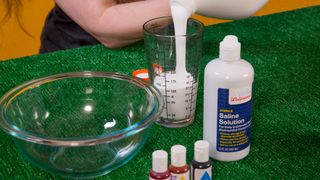
Step 2: Add baking soda
Pour in about 1 tablespoon of baking soda and blend it with the glue.
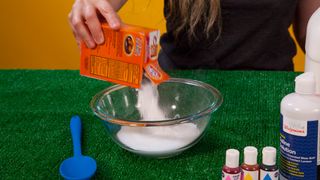
Step 3: Add color
For this vivid color, we added 8 drops of pink food coloring. Mix well with the glue and baking soda until the color is uniform and there are no white streaks in the mixture.
Sign up for the Live Science daily newsletter now
Get the world’s most fascinating discoveries delivered straight to your inbox.

Step 4: Add contact lens solution
Add two squirts of contact lens solution. The boric acid in the solution reacts with the glue, creating the slime's signature texture.

Step 5: Mix
Now start stirring! You should immediately see the effects of the contact lens solution, which will make your mixture stick to itself rather than to the sides of the mixing bowl.
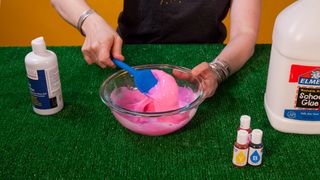
Step 6: Watch the transformation
When making slime, it's important to be hands-on. Stick your hands in and test the texture. If it's still too sticky, add another squirt of contact lens solution. Keep kneading your blend and adding more solution as required, until it has the consistency you want.
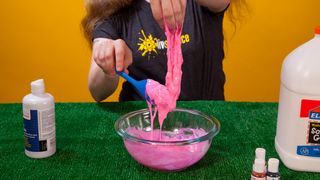
Step 7: Presto, slime!
Enjoy your slime! If things get messy, vinegar can help with cleanup.

For more slime fun, check out our step-by-step guide for making puffy slime.

Mindy Weisberger is an editor at Scholastic and a former Live Science channel editor and senior writer. She has reported on general science, covering climate change, paleontology, biology, and space. Mindy studied film at Columbia University; prior to Live Science she produced, wrote and directed media for the American Museum of Natural History in New York City. Her videos about dinosaurs, astrophysics, biodiversity and evolution appear in museums and science centers worldwide, earning awards such as the CINE Golden Eagle and the Communicator Award of Excellence. Her writing has also appeared in Scientific American, The Washington Post and How It Works Magazine.
Most Popular

